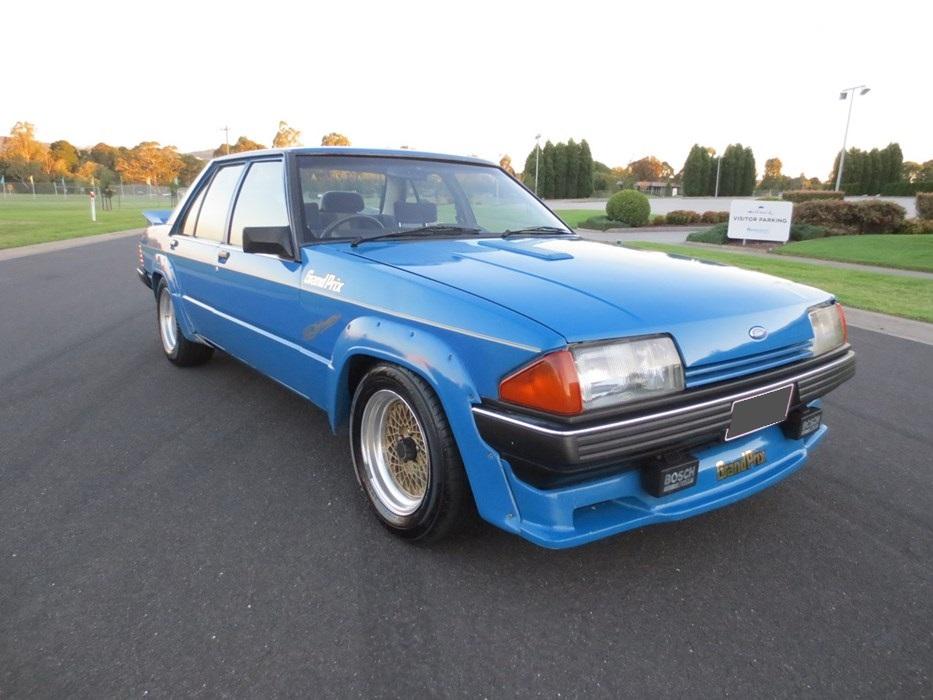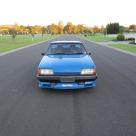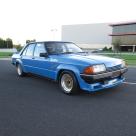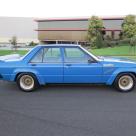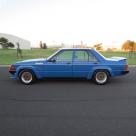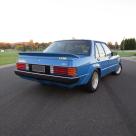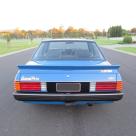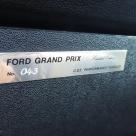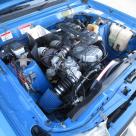1983 Ford Falcon XE Dick Johnson Grand Prix
Specifications
Vehicle location
Australia , VIC , Vermont South
The 1980s saw some great touring cars, and this particular car was born from this very unique era in Australian motorsport history, where competitors were moving from cubic inches to turbo chargers under ever changing competition regulations. This particular car is an ultra-rare version of Australia’s XE Ford Falcon, produced under the direction of the famous racing driver Dick Johnson. Having undertaken a little research, we’ve found it difficult to locate comprehensive information on these cars, and particularly inconsistent information exists with respect to production numbers across forums and other sources.

This car claims to be number 43, the last vehicle built of its kind, and is currently advertised for sale here on Carsales. The only records we’ve been able to turn up suggest fewer than 30 were ever produced, but numbers tend to vary depending on the source. Nonetheless, with after-market performance cars like this, record keeping is generally not to factory standard, and number 43 could be the real deal.
Despite the production number question, this car certainly looks the part as a Grand Prix edition, with everything in the right place. Any prudent purchaser would of course need to see the vehicle’s data plate to confirm its identity with greater certainty, considering in particular the money being asked ($50,000 AUD). Although not cheap to put together, replicas of these cars are certainly possible, with the body kits and decals obtainable.

Why did they build it? According to most sources, Ford intended to cease production of V8 cars in Australia during the early 1980s, which would have left Dick Johnson without a competitive entry in the Australian Touring Car Championship (ATCC). As a result of Ford's decision, a plan was hatched to produce 250 of these cars to qualify it as an Australian production car, and thereby allow Dick Johnson to compete in the ATCC in the post-V8 era. If you’re wondering what inspired the body kit, just have a look at the XD and XE falcons from the ATCC of the early 1980s, and no doubt the blue paint reflects Johnson’s famous true-blue racing XD. What really ended up killing the idea for this car (including further production units), seems to be the decision to use the Ford Sierra Cosworth, which was allowed to compete in the championship following another regulation change. Having proven itself as an extremely competitive touring car internationally, the Sierras presence effectively meant that this project no longer stacked up, and Dick jumped successfully into the famous number 17 Sierra, never to look back until turbocharging was itself banned some years later.
The car’s facts and figures are quite impressive for the era, and particularly so considering it was a 6 cylinder. Effectively, these cars started out as standard XE Falcons, with a large number of modifications being made by CDT (Country Dealer Team). CDT had heavy involvement in the modification of Holden Geminis, among other cars, and worked on the Falcon in all areas that effected performance, under Dick Johnson’s guidance. Some of these modifications included the following features:

- Turbocharged 4.1 litre six cylinder producing 190kW (255hp).
- Four-speed manual gearbox.
- Heavy duty clutch.
- 4 wheel disc brakes.
- LSD rear end (same as the Falcon V8 ESP).
- lowered and stiffened suspension.
- Enkel alloys wheels and BF Goodrich Comp T/A tyres.
- Body kit produced by ‘CDT’ consisting of a front air dam, flared wheel arches and a rear wing.
- Grand Prix and Dick Johnson signature decals.
- Unique numbered CDT build plate (on dashboard and intake manifold).
There are not many cars around that can claim such a rare status like these, and their 1980s styling combined with the racing flares typical of that period will make these cars stand out to enthusiasts in future. We certainly look forward to seeing more of these restored to this condition.
We would love to know more about these cars, and get as many on the register as possible, given their scarcity. If you own one, have owned one, or have further information about these cars, please get in touch with us, as we intend to draft an ID-guide in future, as well as for other rare Falcon models.
You are about to contact the author of this vehicle.
Be aware this vehicle has currently not been listed for sale!
So refrain from price bidding.
